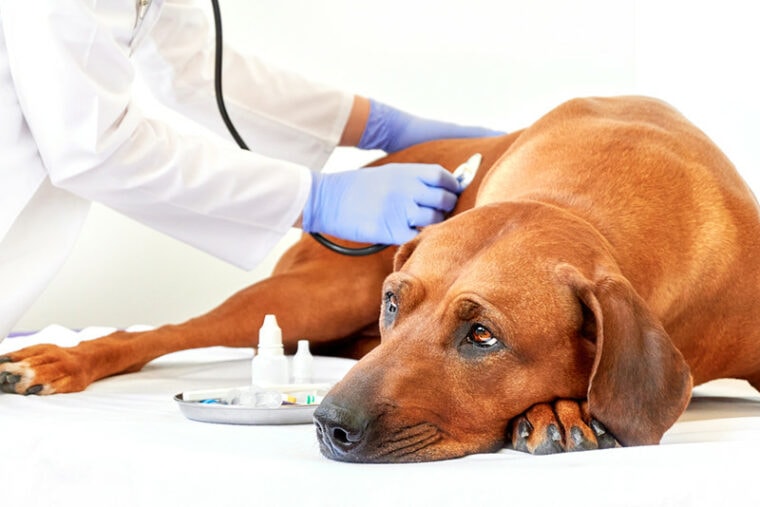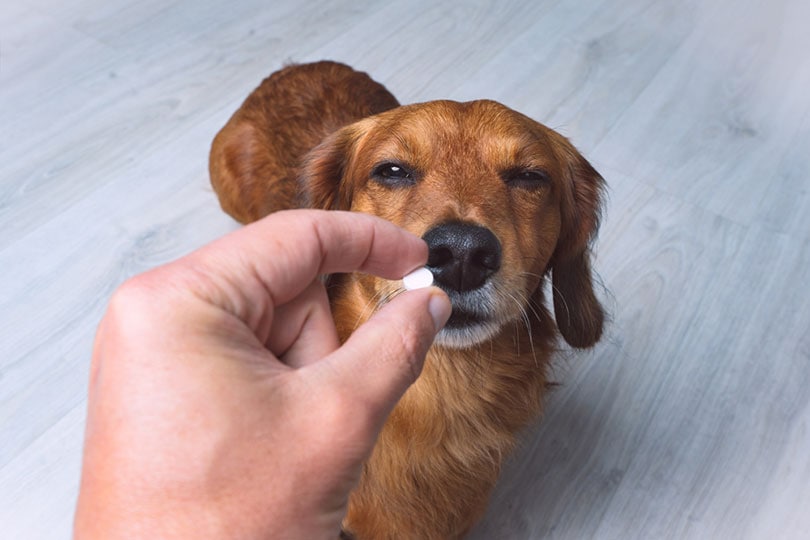
Diabetes is a common disease across humans, dogs, and cats, with similar signs. There are different types of diabetes, though, with different types being predominant in different species. Read on to learn all about diabetes in dogs and how to care for a diabetic dog at home.
What Is Diabetes?
Diabetes, actually diabetes mellitus, is an endocrine disease. Insulin is a hormone produced by certain cells of the pancreas. Lack of insulin production or response to insulin leads to high blood sugar levels that make a dog ill.
What Are the Signs of Diabetes in Dogs?
What Are the Causes of Diabetes in Dogs?
There are four main causes of diabetes in dogs.
The first and most common is an autoimmune disease in which a dog’s immune system attacks the cells of the pancreas that produce insulin. This causes a dog to completely lose the ability to produce their own insulin and leads to Type 1 diabetes. The exact cause of this immune reaction is not known though some of the responsible antibodies have been identified.
Another cause of diabetes in dogs is pancreatitis, which means inflammation of the pancreas. Chronic pancreatitis, a prolonged inflammation of the pancreas, can lead to diabetes in dogs. This can also be part of how weight and diet may be related to diabetes risks in dogs, as high-fat diets and obesity are causes of pancreatitis.
Diabetes can also be a genetic condition, with some breeds more likely to develop it. Several breeds have been identified with higher risks of developing diabetes, such as American Eskimo Dogs, Dachshunds, Labrador Retrievers, Poodles, Pugs, Yorkies, and Huskies. The exact genes causing this have not been identified.
Lastly, other endocrine disorders can also cause diabetes. Examples include gestational diabetes (Type 3), which is caused by elevated progesterone levels (a hormone produced by the endocrine system via the ovaries), and hyperadrenocorticism (Cushing’s), which is the overproduction of steroids by the adrenal glands. Steroid medication can similarly also trigger diabetes in dogs.

How Is Diabetes in Dogs Diagnosed?
Identifying high blood sugars through blood work is what allows for a definitive diagnosis of diabetes. The process of confirming diabetes usually also involves noting all signs of diabetes in a dog’s history and on a physical exam. Additional testing can include checking a dog’s fructosamine level on bloodwork, which gives a better picture of a dog’s blood sugar over the last few weeks, and a urinalysis which can show sugar in the urine sample secondary to high blood sugars and potentially secondary complications like undiluted urine or a UTI.
Stress in a vet clinic can artificially raise a dog’s blood sugar temporarily, which is why checking the fructosamine level is important for the correct diagnosis of diabetes.
Screening for other endocrine disorders may also be warranted based on the signs a dog is showing, their breed, or familial history.
How Is Diabetes in Dogs Treated?
For most dogs, diabetes requires treatment with insulin therapy for the rest of their life.
Insulin therapy is the administration of insulin under the skin via injection twice daily to help control blood sugar levels. It requires regular rechecks of a dog’s blood sugar to fine-tune their insulin dosing, which can also change over time.
Keeping a dog’s blood sugars perfect all day is often not attainable, and the resolution of their signs of diabetes is also used to gauge the success of treatment.
There are many different types of insulin and finding the type that works best for an individual dog may require some trial and error as there is no one best insulin choice for dogs.
Type 3 diabetes often resolves on its own after the end of pregnancy as the hormones return to normal. In some cases, diabetes may persist. Spaying these dogs can raise the chances those dogs go into remission.
Changing a dog’s diet to one high in fiber and containing complex instead of simple carbohydrates can improve sugar levels and response to insulin in diabetic dogs. These diets also support weight loss which can also help improve sugar control in diabetic dogs.
Treatment of any secondary infections or concurrent endocrine diseases is also important. It is recommended to spay any intact diabetic female dogs, regardless of any pregnancy history.

How Do I Care for a Dog With Diabetes?
Maintaining a strict diet, meal schedule, insulin schedule, and weight control significantly help treatment for diabetes succeed. It is important to maintain all blood sugar rechecks with your veterinarian for the safe administration of insulin.
Dogs’ sugar levels can now be monitored daily via continuous glucose monitors, but these are prescription-only items. Be sure to discuss an interest in this tool with your veterinarian if you wish to explore using one with your dog.
Careful monitoring of signs of diabetes, such as thirst and urination levels, appetite, vomiting episodes, energy levels, and weight, is important to assess how well a dog is responding to treatment for diabetes. Their sugar levels aren’t the only relevant information to track.
Cataracts that develop due to diabetes are not treatable, and dogs will often become blind, which may necessitate other care needs for that dog.
FAQ
How long do dogs live after being diagnosed with diabetes?
Many dogs only live for a couple of years after diagnosis though it is possible for them to live otherwise normal lifespans. Good diabetic control in dogs can be tricky, which is part of why diabetic dogs often pass sooner than other dogs.
How does a dog feel with untreated diabetes?
Most dogs with untreated diabetes will feel generally unwell. If left untreated, diabetic ketoacidosis can develop, which is an emergency that requires hospitalization to treat and usually has more severe signs of diabetes involved, such as anorexia and vomiting.

Is insulin for dogs expensive?
Since there are many different types of insulin, the costs can also vary widely. Some are as cheap as $40 per bottle; others can be more than $300. The amount of insulin per injection needed to control a dog’s blood sugars can also vary widely, leading to vastly different lengths of time between refills for different dogs.
Did I cause my dog’s diabetes?
While there are some causes of diabetes-related to a dog’s care, such as their weight or control of other diseases such as Cushing’s, diabetes can also be genetic and can be completely unrelated to the care provided by their owners.

Where can I purchase dog insulin?
Some insulins used in dogs are specifically for use in dogs and other animals, while others are human insulins. Human insulins can be purchased at any pharmacy, while pet-specific insulins may require an online pet pharmacy or human pharmacies that stock pet products, such as Walmart or Costco.
Conclusion
Diabetes is a common disorder in senior dogs that requires lifelong treatment via insulin injections. While some dogs struggle to respond well to treatment, others may do great and live otherwise normal lives with special attention to care by their owners. Between diagnostics and medication, diabetes can be expensive to treat. Careful monitoring of the quality of life of a diabetic dog is an important part of assessing the success of treatment, and they should also receive regular checkups with their veterinarian.
Featured Image Credit: Zontica, Shutterstock







